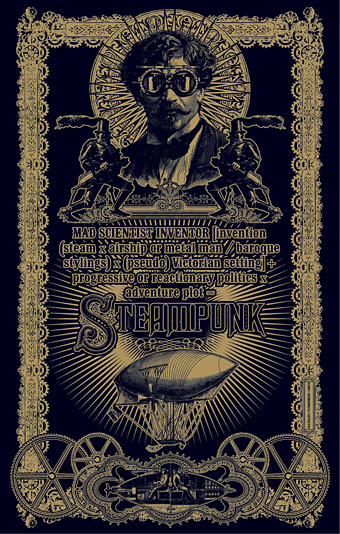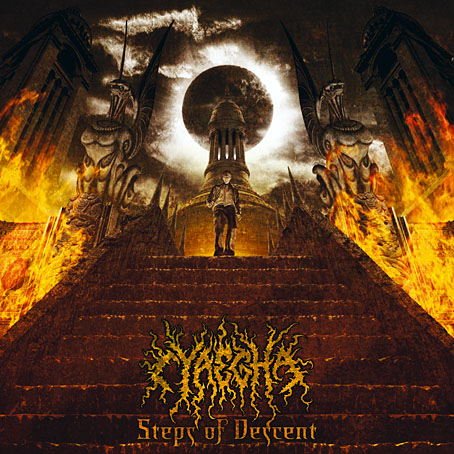Month: August 2008
Drawstring
Jerom photographed in a Jerome-studio fashion feature for Fantasticsmag.
Chris Watson: Oceanus Pacificus
This is worth noting even though it’s nearly over, a short presentation of sound recordings by Chris Watson at the alt.gallery, Newcastle. Watson was a founder member of one of my favourite groups of the post-punk era, Cabaret Voltaire. He left CV in 1981 and shortly thereafter formed The Hafler Trio, an experimental audio outfit with whom I conducted some correspondence for a couple of years. I still have a letter somewhere signed by the group authorising me to act (creatively) on their behalf, a licence I’m sorry to say I never took advantage of beyond sneaking the name of their enigmatic mentor, Robert Spridgeon, into the Thackery T Lambshead Pocket Guide to Eccentric and Discredited Diseases. Watson today is an internationally renowned wildlife sound recordist, responsible for a number of stunning CDs on the Touch label, as well as much work for television documentaries. The alt.gallery exhibition runs to August 6, 2008.
Oceanus Pacificus brings the sounds of the largest ocean, encompassing almost a third of our planet, into one of the UK’s smallest galleries. This unique four channel sound installation is created from nighttime underwater recordings of the Pacific Ocean.
Recorded at the depth of three metres, reflecting the exact physical dimensions of the gallery space, the installation presents underwater voices, rhythms and movements rarely heard by the human ear. The ebb and flow of the Humboldt Current creates a seductive and harmonic rhythm as cold water wells up from the depths, drawing up the sounds of life.
The recordings were made on location around the Galapagos Islands 1000km off the coast of Ecuador, using a pair of Dolphin Ear Pro Hydrophones onto a NAGRA ARES-PII digital audio recorder. The four hydrophones were fixed on a square wooden rig and suspended three metres below the surface at night to capture the voices and rhythms of this hostile environment.
Chris Watson is a sound recordist specialising in natural history with a particular and passionate interest in recording the wildlife sounds of animals, habitats and atmospheres from around the world. He is interested in the quality, depth and diversity of sounds produced by water, from single drops to streams, ice sheets, glaciers, waterfalls and oceans. He has described the sounds of water as “the music of another medium”.
He is one of the most prolific and versatile figures working in sound today. In 1971 he was a founder member of the influential Sheffield-based experimental music group Cabaret Voltaire and in 1981 was a member of The Hafler Trio. His sound recording career began in 1981 when he joined Tyne Tees Television. Since then he has worked with David Attenborough on BBC TV productions such as The Life of Birds and The Blue Planet. In 1998 he won a BAFTA for Best Factual Recording for The Life of Birds.
He has produced various sound installations, including Whispering in the Leaves commissioned by AV Festival 08 and Forma. From 19 July – 2 November he will be presenting the sound installation Cima Verde as part of Manifesta 7 in Italy.
The 7” record Oceanus Pacificus was released by Touch in 2007 as part of the Touch Sevens series of 7” vinyl only releases. For further information please visit www.touchmusic.org.uk/touchsevens.
Previously on { feuilleton }
• Max Eastley’s musical sculptures
• The Avant Garde Project
New things for August
Arriving in the post today was Steps of Descent, the new CD from American band Cyaegha featuring my design and illustration. The name Cyäegha (sic) belongs originally to a Cthulhu Mythos entity invented by Eddie C Bertin, author of The Whispering Horror, my favourite story from the Pan Book of Horror anthologies of the Seventies. The cover illustration is based on a scene from HP Lovecraft’s The Dream Quest of Unknown Kadath and the cover and inner pages feature some photographic material from one of my Paris trips. I was very pleased with the way this turned out and I believe the band are too. Steps of Descent is officially released by Canonical Hours on the 8th of August.

Another recent piece of work is this Steampunk design suggested by writer Jeff VanderMeer who wanted a suitable layout for his semi-serious Steampunk formula. Jeff and wife Ann edited the recent Steampunk anthology from Tachyon so he knows whereof he speaks. This was going to be a T-shirt design but it seems now it may have a different outlet; more about that if and when it happens. The growing popularity of Steampunk as a sub-culture has raised some hackles recently but I like it even though I’ve not read many of the latest literary contributions. Anything which puts more brass, dirigibles and florid Victoriana into the world gets my vote.
Previously on { feuilleton }
• Zeppelin vs. Pterodactyls
• Wanna see something really scary?
George Pal’s Puppetoons
Tulips Shall Grow (1942).
Film producer George Pal‘s run of fantasy and science fiction films are justly celebrated and include one particular favourite of mine, The Time Machine (1960). Prior to the 1950s, however, Pal was known for his distinctive animations using wooden puppets, a technique which acquired several names, Pal Doll, Madcap Models and Puppetoons. Europa Film Treasures has two choice examples of these, La Grande Revue Philips from 1938, a promotional work for the Dutch radio company, and Tulips Shall Grow, a striking piece of wartime propaganda from 1942. The latter is especially worth a watch, not least for the way its scenes of destruction prefigure similar scenes in Pal’s updating of War of the Worlds ten years later.
The few Puppetoons I’ve seen have a unique atmosphere, the brightly-lit wooden characters seem hyper-real, like computer graphics decades before their time, while the movement tends to be bouncy and repetitive due to the figures having a limited range of poses. The only animation I can think of with a similar quality—and which may well have been influenced by Pal’s work—is Inspiration, Karel Zeman’s animation of glass figures from 1949. Some of Pal’s later films used his Puppetoon technique, notably tom thumb (1958), a film which also featured Jessie Matthews (aka Mrs Lord Horror in David Britton’s mythos) in one of her last screen appearances.
Previously on { feuilleton }
• Karel Zeman
• Barta’s Golem




